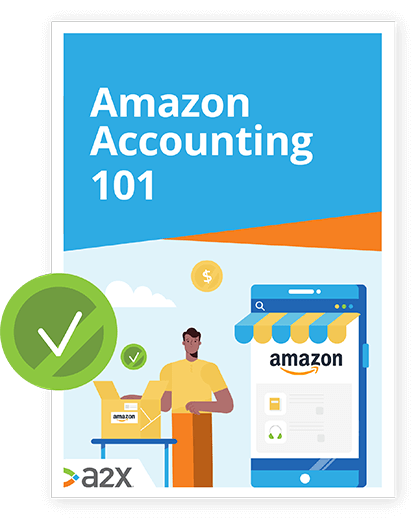
Sales Tax Nexus Trends – What Amazon Sellers Need to Know
The past year has been unprecedented in terms of sales tax law changes that impact online sellers.
The whirlwind began after the U.S. Supreme Court handed down its decision in South Dakota v. Wayfair in June 2018. The Wayfair decision is all about nexus – the level of connection between your business and the state that obligates you to register and collect sales tax.
The Supreme Court ruled that physical presence is no longer the main requirement for creating nexus, that it can also be created when a seller’s sales into a state exceed certain economic thresholds. What didn’t change is that physical presence, such as due to inventory or employees in the state, still creates nexus as it always has, without regard to the new economic thresholds.
The persistent problem is that states do not have one shared definition of nexus and the rules and definitions change constantly – particularly post-Wayfair. However, there is a series of steps Amazon sellers should take to evaluate nexus and their sales tax obligations.

Always Start with Physical Nexus
With the spotlight on economic nexus following the Wayfair decision, a lot of businesses have put blinders on to other nexus-creating activities they perform by purely focusing on economic nexus thresholds.
The economic nexus thresholds are not relevant in states where you have physical presence. The Wayfair decision did not alter states’ longstanding physical presence rules.
The core elements of physical nexus are people and property. Evaluating physical nexus involves asking questions like: Where do you have employees working on your behalf – either temporarily or permanently? Where do you have a permanent place of business? What about a temporary place of business like a trade show booth?
Property is a sticking point for online sellers, particularly Amazon FBA sellers. Company-owned inventory in a third-party warehouse is considered physical presence. Amazon FBA sellers must monitor their sales to track where Amazon is sending their inventory.

Economic Nexus – the New Norm
If you don’t have physical presence in any of the states you sell to, now you look at economic nexus. There are five key considerations for the way states have implemented economic nexus legislation: the thresholds, the type of sales included, if its an “OR” or “AND” test, the sales periods to include, and when you need to register once you exceed a threshold.
1. Thresholds
Most states use South Dakota’s economic nexus threshold that was scrutinized under the Wayfair case: $100,000 or 200 or more separate transactions. However, there are a handful of states that have alternative thresholds such as Alabama with $250,000, California with $500,000, and New York with $300,000 and 100 sales. Recently, we’ve seen several states – Colorado, North Dakota, and Washington – remove their transaction count thresholds, leaving only the dollar amount.
2. Includable Sales
Next, you have to understand which type of sales are included towards the threshold. The majority of states use gross sales as their measure, which means all sales, not just taxable sales. Some states use retail sales, which includes taxable and exempt sales but excludes sales for resale in the calculation towards the threshold. Others follow a taxable sales rule, which excludes exempt sales whether they’re entity, usage, or product based. If you make sales for resale or sell to exempt organizations, you MUST get the appropriate exemption certificates. If you don’t have the exemption certificates, then the sales are considered taxable.
3. OR vs. AND Test
All states except Connecticut, Massachusetts, and New York use an “OR” test as in “$100,000 OR 200 transactions,” meaning if a seller exceeds either the sales or transaction threshold, they must register. Connecticut, Massachusetts, and New York use an “AND” test for which sellers must satisfy both thresholds before being required to register and collect tax.
4. Sales Periods to Include
The next step is figuring out if you exceed the thresholds. Almost every state uses the previous or current calendar year as the measurement date. There are some states that don’t use this standard rule, so pay close attention to each state’s language. If you don’t exceed the threshold prior to the effective date, you are required to register once you exceed the threshold. You are not liable for tax on sales prior to meeting the threshold. If you drop below the threshold in a future year, you can cease your registration – but you need to continue to monitor your activity.
5. When to Register
The final question is how quickly a seller must register after meeting a threshold. Unfortunately, most states require registration on the next transaction. This means you need to closely monitor your sales activity to ensure you register in a timely manner. Several states have recognized this challenge and set a delayed registration date once you meet the threshold. For example, in North Carolina you must register within 60 days after meeting the threshold.

Bringing Marketplace Facilitators into the Mix
Economic nexus legislation was the big trend for 2018 following the Wayfair decision. The major trend among the states for 2019 is marketplace facilitator collection legislation. In simple terms, this type of legislation requires an online marketplace facilitator or provider, such as Amazon, eBay, or Esty, to collect sales tax on behalf its sellers if the sales it facilitates or makes on its own behalf exceed the states economic nexus threshold.
Marketplace legislation shifts the collection burden from small sellers to the marketplace facilitator. Some states are implementing a certification process where the marketplace will obtain proof from the state that they are collecting the tax that can be provided to marketplace sellers. If the marketplace is not collecting, the seller can still be responsible for the tax.
The key requirement Amazon and other marketplace sellers need to watch for on a state by state basis is whether a seller must include sales made through a marketplace towards its individual threshold calculation if the seller makes sales through other channels, like their own website. Most states require you to include marketplace sales – even if the marketplace facilitator is already collecting – if you also sell direct to customers using other means.

Resources for Marketplace Sellers
All of the new requirements are enough to make your head spin, but there are places you can go to for guidance. The Sales Tax Institute is an excellent resource for online sellers to navigate all the changes.
As a starting place, check out the Sales Tax Institute Nexus After Wayfair – What You Need to Know whitepaper. It’s a free resource to help you determine if and how you have sales tax nexus.
You can also check out our regionally specific tax guides:
- USA & Canada eCommerce tax guide
- UK & EU eCommerce tax guide
- Australian eCommerce tax guide
- Asian eCommerce tax guide (Hong Kong)
To find key information about each state’s economic nexus rules for out-of-state sellers, such as effective dates, thresholds, and includable sales, visit the Sales Tax Institute’s Economic Nexus State Guide. For a broader look at which states have other types of remote seller nexus, including marketplace facilitator rules, visit their Remote Seller Nexus Chart.
For more in-depth help specific to your situation, the Sales Tax Institute team can analyze your risk level post-Wayfair in their Wayfair Risk Analysis. The analysis includes a detailed list of which states you might need to register in order to collect and remit sales tax as well as recommended next steps to adapt your ongoing management of new taxes. If you have inventory in a state where you haven’t registered and filed, the Sales Tax Institute team can help you navigate a Voluntary Disclosure Agreement. They also have some special programs set up with a few states that limit the look back period for penalties and interest.
Learn how to manage your Amazon accounting the right way
Amazon accounting can be complex. Between sales tax, different fee types and the sheer volume of transactions, there’s a lot going on. Discover the easy way to manage your Amazon accounting.
Download our free guide


